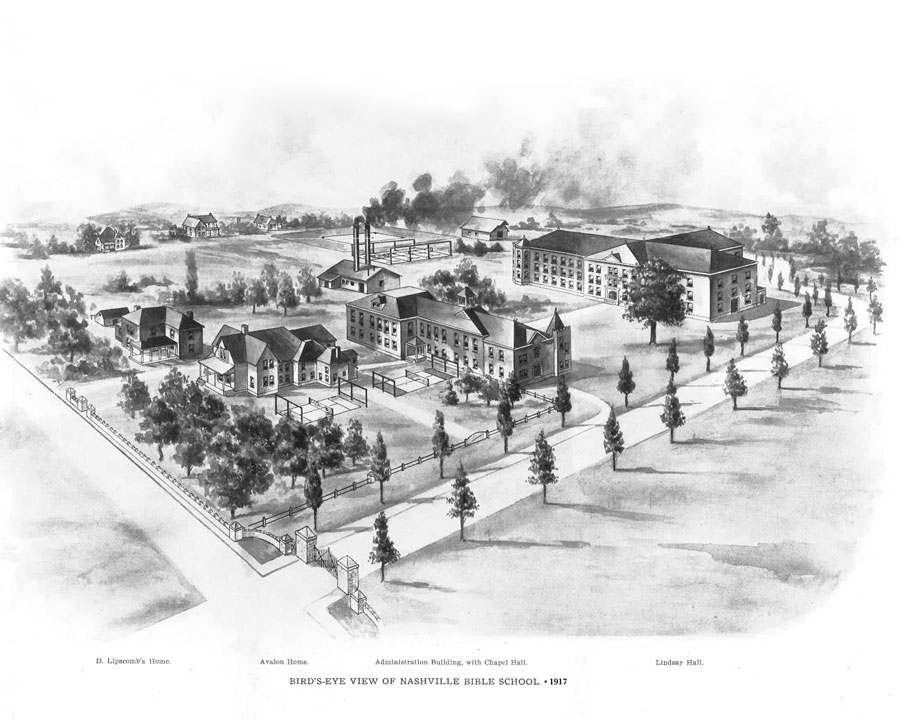Mission & History

Mission
Lipscomb Academy is an intentionally Christian community with a mission to equip students to love to learn, learn to love, and live to serve.
History
Lipscomb Academy traces its roots back to 1891 when two preachers named David Lipscomb and James A. Harding established the Nashville Bible School in a rented house in downtown Nashville. Thirty-two students were enrolled during the first session. By 1896 the school had three divisions: collegiate, intermediate, and primary. Most of the primary students were children of faculty members.
Although a section of the school equivalent to high school has always existed, in the very early years of the school, high school students took the courses of their own selection and, when they felt ready, went on to college level courses.
After several locations changes around Nashville, in 1904 the Nashville Bible School opened on its current site in modern-day Green Hills, only four miles from the center of town. Among the school’s first four buildings on the current site was Harding Hall (named for the founder), still used today as the heart of Lipscomb Academy. After the death of founder David Lipscomb in 1917, the school was renamed as David Lipscomb College.
In 1927, the high school met the qualifications required by the Southern Association of Colleges and Schools and was accredited by SACS. That accreditation has been maintained since that year. In 1944, David Lipscomb College began the process to be classified as a four-year senior college. This necessitated constructing several new buildings on campus, which freed up the exclusive use of Harding Hall for the intermediate and primary school.
From midcentury on, David Lipscomb Campus Schools went through various growth spurts. In the 1950s, Acuff Chapel was constructed, and in the 1960s the latest modern academic facilities of the time were added to Harding Hall -- a home economics, typing, biology and chemistry labs as well as a new library.
The 1970s and 1980s were a time of great change as a middle school structure was established for grades 5-8 and the first director of the campus school was appointed. The high school gym and the Reese Smith Athletic Complex were constructed during this time, and the elementary school moved to a separate location, near the corner of Harding Place and Granny White Pike, in 1986.
Moving into the 1990s, tremendous enrollment growth in the middle and high school grades meant classes had outgrown Harding Hall, and students were learning in classrooms scattered through basements, residential houses, modular buildings and other less suitable spaces. In 1996, a massive building campaign was launched that resulted in many of the facilities you see today, including Adams Hall, the auxiliary gymnasium, the cafeteria, school offices and athletic facilities, connecting all facilities under one roof.
In the new millennium, facilities continued to be renovated and academic offerings such as Advanced Placement classes, wireless technology, increased graduation requirements and elective classes in Bible came into being. The Office of Campus Minister was added in the 2002-03 school year.
Under the current Lipscomb President L. Randolph Lowry, who began service in 2005, Lipscomb Campus Schools became Lipscomb Academy. In 2016, the 25,000-square-foot McCadams Athletic Center was built adjacent to the newly refurbished football stadium, and in 2020, a $1 million gift provided for the installation of a new turf football field. Through generous donations of $16 million, in Jan. 2021, a 22,000-square-foot expansion project will open at the Lower School Brewer Campus featuring the Solly School, a school for children with differences.